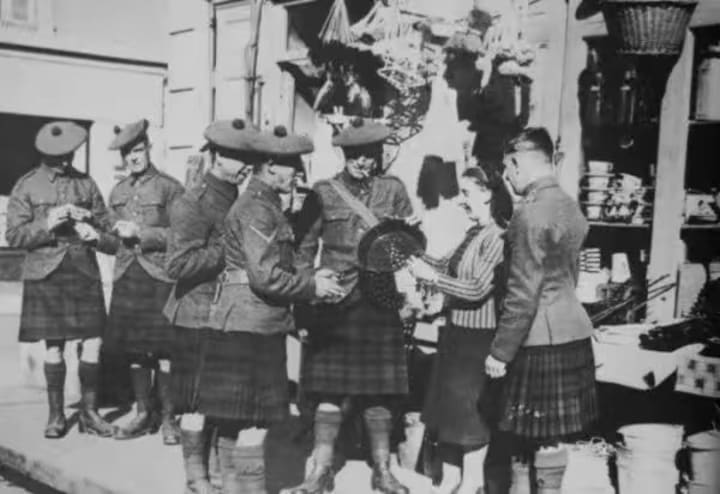The Germans fled in defeat, Rommel occasionally found his anti-aircraft guns idle, and turned the tide
Rommel

In 1916, a kind of steel monster called "tank" appeared on the battlefield of the First World War, from then on called the male land, known as the king of land war!
Interestingly, when the British invented "tank", the word originally meant a container for storing a liquid or gas. Before entering the war, its type-I tanks adopted the name for secrecy. As a result, the water vessel became a term for the steel giant, which is still used today.
By World War II, tanks were widely used on the battlefield, and Rommel, the "desert fox" who became famous in Europe, was a tank division commander at the beginning of World War II.
Here, let's take a look back at the classic battle he commanded -- the Battle of Arras!

A lone army in deep, dangerous
Before the German invasion of France, the French phalanx deployed millions of troops on the Maginot Line. Germany invested 136 divisions, more than 2,400 tanks, more than 3,700 aircraft, and 600 transport planes. The troops were divided into three army groups on the left, the middle and the right.
Of the three blocs, the left wing was the weakest, with only 17 divisions, charged with the feint against the Maginot line.
It is known to all that the Maginot Line is impregnable. If the German army insists on attacking Maginot, it can be said that it is playing with eggs against stones. Of course, the German High Command was not so stupid. They took a detour through the Ardennes Mountains, crossed Belgium, and easily entered France.
When Germany invaded France, the years of painstaking Maginot in vain, the French psychological defense also completely collapsed.
Next came a British and French counterattack on the German flank near Arras, a town in northwestern France. The Germans push north to the coast in order to encircle the Allies who are pushing east to Belgium.
To stop the German advance and try to hold the line, the British Expeditionary Force reinforced the town of Arras. Lord Gott, commander in chief of the British Expeditionary Force, ordered a counterattack in an attempt to delay the German advance so that the British would not be surrounded.

At this point, one of the panzer divisions broke in too quickly and separated itself from its friends, so that a bulge was formed.
Seeing an opportunity, the British wanted to annihilate the enemy and reinforce the broken line along the Maas River by taking the rear route.
The British believed they could do it themselves, with two infantry divisions, more than 70 tanks from the fortified Brigade of the First Corps, and more importantly 80 tanks with French support, as well as home advantage for the French army.
So the British and French were confident that the outstanding division would soon be in their possession.
Two soldiers paradoxical also - not according to the common sense of the card Rommel
The lone and deep armored division just introduced was led by Rommel!

Rommel graduated from high school in 1916, attended military academy, and served as a company commander during World War I, winning the Iron Cross three times. He was appointed commander of the 7th Panzer Division in February 1940 because his book "The Infantry Attack" attracted Hitler's attention.
In May and June of that year, he commanded the 7th Armored Division to take the lead, and in one fell fell Belgium and other three countries, to the west coast of France. Sometimes he walked so fast that his troops could not keep up with him, and he had to turn back to look for his troops.
As a result, the 7th Panzer Division was called "the Devil's Division" by the French.
Rommel fought two things. First, he didn't follow the rules. He was a little unheeding. Sometimes he would just turn off the radio in the middle of a long march. In addition, he likes to play tricks and change his tactics so much that you never know what move he will make next.
Britain and France were astonished at this advance, and even the German High Command was puzzled, saying that Rommel had been too confident in taking such a risk.
By the time the Battle of Arras was about to begin, the nations of Western Europe were already reeling from the German blitzkrieg. The British believed that Germany's best troops had to be defeated to truly shatter the myth of German invincibility.
After some deliberation, the British settled on the aggressive 7th Armoured Division, and chose its location at Arras instead.
Besieged by allied forces, could Rommel work miracles?

Three brainwave, created the anti-aircraft gun hit tank precedent
On May 21, the Allies launched a long-awaited return offensive. The British tanks that were able to take part in the attack had two battalions of tanks, a total of 74 tanks, and the French, who were coordinating on the right flank, made 150 tanks and 20,000 infantry.
At the time, the 7th Panzer Division had a significant disadvantage of 118 tanks due to combat losses and mechanical problems, and now only about 100 of them are fighting. Rommel had fewer than 20,000 infantry, fewer than the British and French.
This, coupled with the fact that the army was alone and unable to keep up with its logistics, was also deadly for the unit. At the moment of the Allied attack, Rommel, commander of the 7th Panzer Division, made another mistake, going the wrong way because of a wrong target plate.
When the attack began, something happened that surprised the German soldiers!
The British 's flagship Mathieu tank ran amokay with the British infantry, and the Germans' tank guns and 37mm anti-tank guns tickled the 78mm frontal armor of the Mathieu.
Since the German anti-tank guns could not destroy the British tanks, the unafraid Allies rushed all the way and soon broke through the German lines. Bombarded repeatedly by Allied tanks, the newly arrived Rommel found himself on the verge of collapse, and the Allies had a chance to break out of the encirclement.
Rommel had never met any decent resistance since he entered France, as if he had entered no man's land. This time, however, it was the Germans' turn to run away from the fierce British tanks.
On Rommel's watch, the British tanks and guns were scrapped one by one, and then plunged into the German camp as if in no man's land.
In this way, Rommel, let alone fight back, even his personal safety became a problem and he was in grave danger.
As he was trying to decide what to do next, there was a deafening blast -- his adjutant, a meter away from him, was killed by allied gunfire!
Under these circumstances, Rommel was forced to announce the withdrawal of his entire army.
The British were so happy that they wrote this sentence for their intelligence service when they compiled the results of the war: all the Nazi anti-tank guns in existence, none of the dirty cannons they fired could penetrate the Holy Imperial tanks.

But as it turns out, the British are too happy!
As Rommel was leading the retreat, he suddenly found a battery of anti-aircraft guns ready to retreat in the woods nearby. He ordered the commander of the anti-aircraft artillery to stop retreating and listen to his orders.
There was no air attack, so what was Rommel doing with the anti-aircraft guns?
As I said, Rommel doesn't play by the book. He has his own agenda!
The anti-aircraft gun of 88mm caliber is mainly used for anti-aircraft fire against opposing fighters and bombers. Neither side imagined Rommel would be able to put it in the line of battle with the opposing tanks.
In fact, when the 88 was first designed, its aiming equipment was very advanced, it could see far and accurately, and it was very stable. Plus, the 88 itself was anti-aircraft fire, which was very far beyond the range of the British tank guns.
When Rommel put the 88 gun in a line of fire at the Allied tanks, the proud Matilda tank collapsed and burst into flames.
They only thought that the German anti-tank guns would not be able to defeat it, but the anti-aircraft guns can be flat fire.
It can be seen that the subjective initiative of commanders is very important in war. Who can make the best use of the existing weapons and equipment, then who is a good general.
For the first time in the history of world war, anti-aircraft guns were used to shoot tanks instead of airplanes!
The battle went on, not at all as the British had hoped, with the wreckage of Matilda tanks strewn across the field after German artillery fire.
The Battle of Arras, instead of helping to turn the tables on the British, shattered their own morale. After the battle, the British and French allied forces did not mount an effective resistance on the battlefield in Western Europe. German forces were overwhelmed wherever they went, and British and French allied soldiers were on the verge of defeat.
Finally, hundreds of thousands of troops retreated to Dunkirk, taking advantage of Hitler's hesitation to evacuate 338,000 British and French troops by land and sea to the British mainland.
On June 5, the German army launched a general assault on the interior of France. The Germans took advantage of the mobility of their tanks and ran around the ring fortifications. The French could not organize a new line of defense and lost their will to resist.
On June 14, German troops marched into Paris, which had been declared an "undefended city". Two days later, the new French government made peace with Germany and France fell.
It took only a month and a half for the German army to take over Western Europe. Its tactics shocked the world again, and the European continent trembled under the German tanks.

digression
After the battle, both Rommel and the other German armies that copied his experience on the battlefield were able to use it as a tactical example. The 88 gun was even fitted to the German Tiger tank, which became an anti-tank weapon.
Although Rommel and the other armies represented were engaged in an unjust war, in the military history of the world, many Western soldiers admire Rommel's command tactics and learn from its essence.

This article only represents personal views, the article has improper, please correct, thank you.
About the Creator
World fun life
Follow me, bring you unlock more life tips, bring you to know the world fun!






Comments
There are no comments for this story
Be the first to respond and start the conversation.